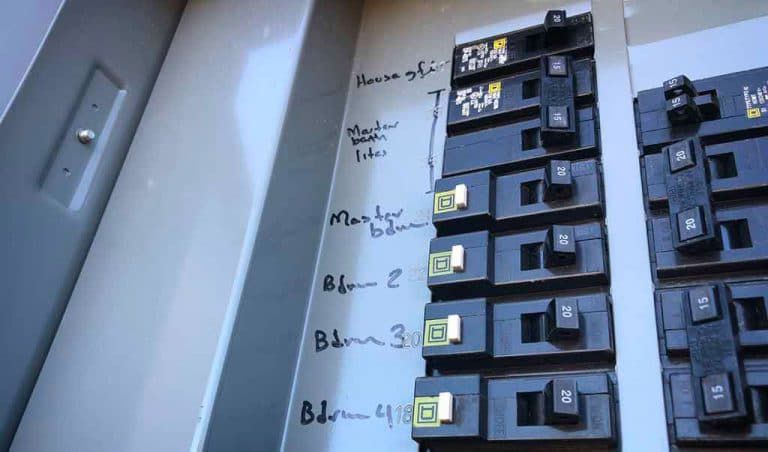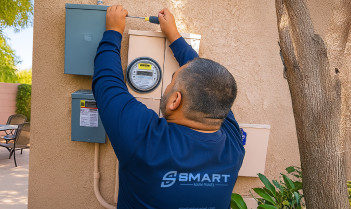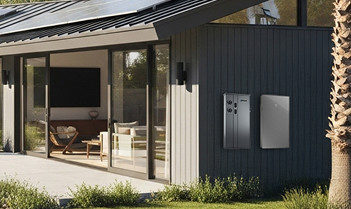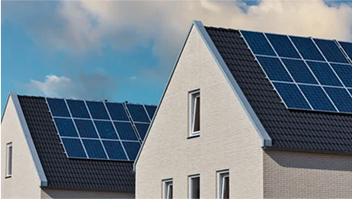
Date
Principles of Efficient UI Design in Main Panel Systems
Introduction
The Smart Main Panel is an energy-efficient smart home panel designed to optimize the use of electricity in households. It aims to provide consumers with greater control over their energy consumption and enhance their overall experience. By incorporating principles of efficient UI design, the panel ensures ease of use and maximizes energy efficiency. In this article, we will explore these principles and their impact on the functionality and design of main panel systems.

Real-Time Monitoring
One of the key principles of efficient UI design in main panel systems is real-time monitoring. This feature allows users to track their energy usage and identify areas where energy wastage is occurring. By providing users with instant feedback on their energy consumption, they can make informed decisions and find ways to reduce it. Real-time monitoring also allows users to evaluate the effectiveness of their energy-saving strategies and make necessary adjustments.
Integration with Smart Devices
The Smart Main Panel goes beyond just monitoring energy usage; it also integrates with other smart devices in the home. This integration enables better coordination and optimization of these devices, further reducing energy consumption. For example, the panel can automatically adjust the thermostat based on occupancy patterns or pre-set preferences, leading to more efficient heating and cooling. It can also control the lighting system to ensure lights are turned off in unoccupied rooms, saving energy.
Automated Features
Another important principle of efficient UI design in main panel systems is the inclusion of automated features. The Smart Main Panel can schedule the operation of various devices, such as turning off lights or appliances when they are not in use. This eliminates the need for manual control and reduces the chances of appliances being left on unnecessarily, thereby saving energy. These automation features also enhance user convenience, as they do not need to remember to turn off devices individually.
Safety Features
While energy efficiency is a key focus, the Smart Main Panel also prioritizes safety. It has built-in sensors and detectors that can detect hazards such as leaks or electrical malfunctions. These sensors can send real-time alerts to users, allowing them to take prompt action and prevent potential accidents. By incorporating safety features into the design of the panel, users can feel confident in their energy management system while ensuring the well-being of their homes and loved ones.
User-Friendly Interface
The Smart Main Panel is designed with a user-friendly interface, making it easy for users to navigate and control their energy consumption. It can be accessed and controlled through a mobile app or a web portal, providing users with convenience and flexibility. Through the app or portal, users can access detailed information about their energy usage and make adjustments to optimize their consumption. The intuitive interface ensures that users can quickly and easily understand the information presented and take appropriate actions.
Empowering Users to Be Energy-Conscious
Overall, the Smart Main Panel aims to empower users to become more energy-conscious and make sustainable choices in their homes. By providing real-time feedback, automation features, and integration with other smart devices, the panel enables users to reduce their energy consumption and save money on their utility bills. Additionally, the panel ensures safety by detecting potential hazards. With its user-friendly interface, the technology allows for easy management of energy usage, empowering consumers to make a positive impact on the environment and their wallets.
For more information about the Smart Main Panel and its energy-efficient features, please visit https://smartmainpanel.com.
Frequently Asked Questions
What is the Smart Main Panel?
How does the Smart Main Panel enhance energy efficiency?
Is the Smart Main Panel easy to use?
What are the key principles of efficient UI design in main panel systems for smart devices and home automation?
The key principles include simplicity, consistency, visibility, feedback, and user control. Simplicity ensures that the system is easy to understand and use. Consistency means maintaining similar operations and elements throughout the system. Visibility involves designing a clear navigation path that is easy to follow. Feedback provides users with clear responses after an action. User control implies giving users the ability to undo actions or make changes.
How does efficiency play a role in UI design for smart device main panels?
Efficiency in UI design refers to making it as simple as possible for users to achieve their goals when using the system. This is done through intuitive layout design, minimizing steps needed to perform tasks, quick load times, and ensuring compatibility across different devices.
What strategies can be used to improve efficiency in home automation UI designs?
Strategies can include using recognizable icons or symbols, grouping related functions together, providing clear instructions or prompts for user actions, allowing customization options for users like theme settings or dashboard layouts etc., and conducting regular testing and updates based on user feedback.
How can we measure the effectiveness of a UI design in terms of efficiency?
The effectiveness of a UI design can be measured by how quickly and easily a user can perform desired tasks without errors on the platform (task completion rate), user satisfaction rates gathered from surveys or direct feedbacks, number of support requests received relating to usability issues etc.
Why is it important to focus on efficient UI design when developing main panel systems for smart devices and home automation?
Efficient UI designs mean less time spent learning how to use the system and more time utilizing its features effectively which improves overall user experience significantly; this leads not only increased customer satisfaction but also higher chances of product success in the market.



